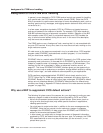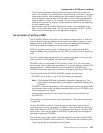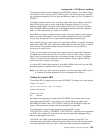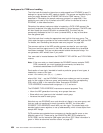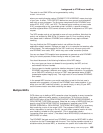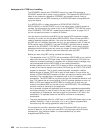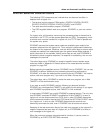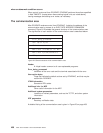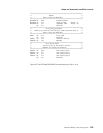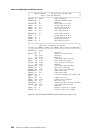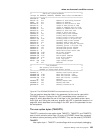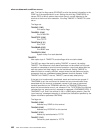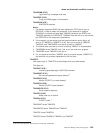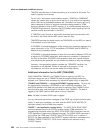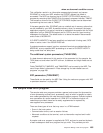
When control is returned from DFHZNEP, DFHZNAC performs the actions specified
in field TWAOPTL (except when disconnecting logical units, as noted above),
issuing messages and setting error codes, as necessary.
The communication area
After DFHZNEP receives control from DFHZNAC, it obtains the address of the
communication area by means of an EXEC CICS ADDRESS COMMAREA
command. Figure 24 illustrates the general structure of the communication area.
The significance of each section of the communication area is described below:
Header
A 4-byte header common to all user-replaceable programs.
Error_being_processed
Identifiers of the error code and the terminal associated with the error.
User option bytes
Flags that indicate the default actions set by DFHZNAC, and that may be
reset within DFHZNEP.
VTAM information
Sense and RPL codes.
Additional info. for NEP
Other useful information for the NEP.
Additional system parameters
Locations of indirect parameters, such as the TCTTE, and other system
information.
XRF parameters
Recovery notification data.
A detailed listing of the communication area is given in Figure 25 on page 459.
Header
Error_being_processed
User option bytes
VTAM information
Additional information for NEP
Additional system parameters
XRF parameters
Figure 24. General structure of the communication area
when an abnormal condition occurs
458
CICS TS for OS/390: CICS Customization Guide



